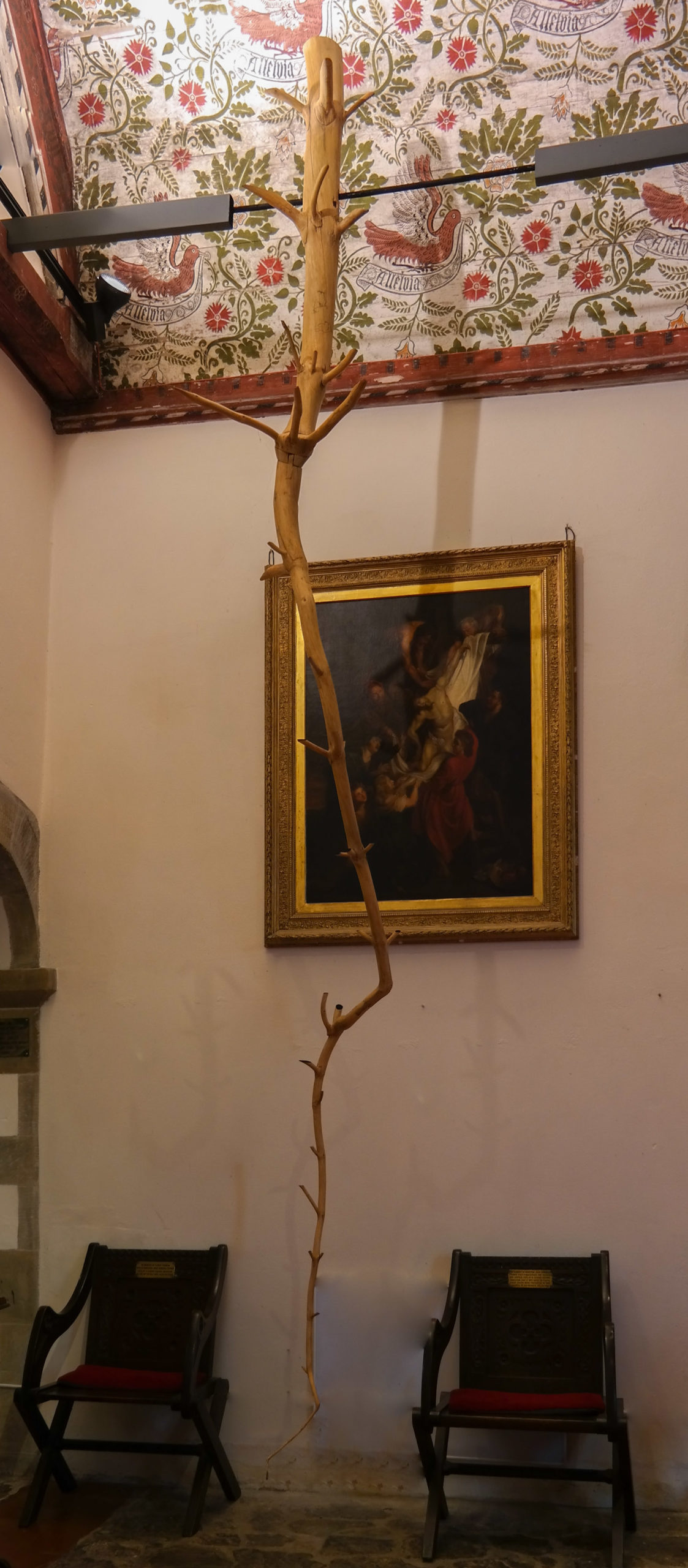Up To Now (Cedar and Pine)
“The upside down tree”
Our primary experiences of the passage of time are associated with the natural process of growth (and decay) in the things that make up our environment. These processes take place over periods of time, and it is through this that they become, for us, representative of Time itself.
Consequently, we actually know the things around us not just from their physical qualities, but also by the way that they change, by what Aristotle called their ’nature’:
The sculpture, Up To Now, seeks to embody such a nature by aligning two of the ‘age’ phenomena by which we comprehend trees; those of increasing height over time and the corresponding growth in girth, or thickness, of the trunk.
The alignment of age phenomena along the growth vector gives to the piece a special quality in that any point on the trunk has its future above (and ahead of it) and its past below. Equally, at its base, as it germinates, it emerges seemingly from empty space, and at the top we again find emptiness representative of the tree’s absence after being felled.
Up To Now portrays a tree as we know a tree rather than as we see one, embodying the duration of a life using the changes that make that duration manifest and that we experience through the phenomenon of ‘age’.
Up To Now (Concept)
In recognising a tree, our perception “pairs” the plant before us with what we know of trees as living, growing and finite organisms. Husserl believed that these ‘recollections’ are co-presented as an integral part of the percept. The sculpture represents this part of the perceived tree, the part that is not actually there.
Up To Now holds in its form our assimilated ‘nature’ of a tree, starting at the ground as a slim shoot, steadily increasing in girth as it grows in height until the moment of its felling, marked by the horizontal cut at its top. The age phenomena of height and girth are aligned along an upward growth vector, expressed and animated by the realigned branches which continue to grow towards the sky.






